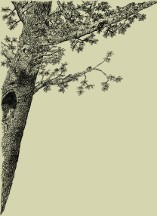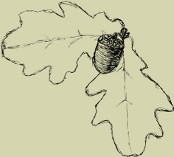42 41 40 39 38 37 36 35 34 33 32 31 30 29 28 27 26 25 24 23 22 21 20 19 18 17 16 15 14 13 12 11 10 9 8 7 6 5 4 3 2 1
Zeszyt 1 (1959)
The study was aimed at investigating the influence of the fungi Memlius lacrymans (Wulf.) Fr. and Coniophora cerebella Prs. upon certain physical and mechanical properties of the following wood species, viz., pine, spruce beech and oak; for pine the effects were separately investigated for sap- and heartwood.
Pure cultures of these fungi were selected for investigation purposes as being most active among several indigenous grafts. The agar-mash culture medium was used as foundation for their development.
The wood under investigation was subject to fungi action during six months under conditions very near to optimal; measurements were performed at one month intervals. The ascertained properties of wood were, viz., weight, volume, specific gravity, higroscopity, compressive strength, static bending, dynamic (impact) bending, shock resistance and hardness. Investigation results were presented statistically with the variations analysis method, and have led to the following conclusions.
1. Decrease in weight was in proportion to the length of time of the action of fungi. M. Lacrymans acted slightly less strongly than C. cerebella. Most substantial weight losses occurred in spruce wood, lesser were observed in diminishing order for: pine sapwood, beech, piric hardwood and very slight ones for oak.
2. Decrease in volume of wood was found to keep in step with its drying. For small samples at general reduction of volume was observed. For larger ones volume reductions were disclosed by numerous larger or smaller splits and shakes. C. cerebella caused a greater reduction of sample volume than M. lacrymans. The phenomenon was observed even then when losses on weight occasioned by action of either fungi were almost equal. In respect to the magnitude of losses on volume wood species ranged in alike order to that stated for reduction of weight.
3. Specific weight generally decreased in proportion with the length of time the fungi action. The magnitude of variations was in general independent of the duration of infection.
4. At the initial period of fungi action hygroscopicity of wood, was somewhat reduced. At later period when lamellae decomposition had begun wood hygroscopicity became increased attained the peak level for spruce wood and in diminishing, order for the following species, viz., pine sapwood, beech, pine hardwood and oak. Wood infected with C. cerebella was found slightly more hygroscopic than that attacked by M. lacrymans. Thus hygroscopicity of fungi infected wood was conditioned by its decomposition rate.
5. Hygroscopicity of fungi infected wood fell with the progress of its decomposition. Presumably the fell in hygroscopicity of wood is conditioned by the extent of cellulose decomposition its hygroscopicity exceeding that of lignin, the quantity of which was not subject to any reduction throughout the period of action of fungi under investigation. The most marked decrease in hygroscopicity was observed for beech, pine sapwood, spruce, then for pine heartwood, least for oak. Under the action of C. cerebella the fall of hygroscopicity was somewhat more pronounced than that under M. lacrymans.
6. Out of all mechanical properties under investigation in respect to all the wood species, shock resistance was subject to the greatest falls, the other properties following in diminishing order, viz., dynamic (impact) bending, static bending, compressive strength and hardness. The fall in compressive strength was uniform throughout all investigated periods and its course could be represented by a more or less straight line. Much less regular was the decrease in hardness for all wood species and in a lesser degree the fall in strength to static bending, dynamic (impact) bending and shock resistance of pine heartwood and oak. Respective graphical representation showed some deviations but the genera1 outline was more or less near to the straight line. Variations in strength to static bending, dynamic (impact) bending and also shock resistance of pine sapwood had a parabolic graphical expression. The decrease of these properties occurred irregularly throughout all the periods of performed investigations. In the opening month the decrease was very marked and could attain sometimes as much 90% (e.g. shock resistance). In consequent periods the rate of fall diminished gradually, reaching sometimes 100% only after the second and third month of fungi action.
7. Out of all investigated wood species most resistant to variations of strength were — oak, next to it pine heartwood. Variations of mechanical properties disclosed by the rest of species of wood were more or less similar to one another.
8. The action of C. cerebella affected slightly more the investigated properties of wood than that of M. lacrymans with the exception of hardness affected in the same degree by action of either fungi. This situation persisted throughout the investigation period.
9. A close relationship was disclosed between the fall of all properties of infected wood under investigation and its specific gravity. This relationship was straightforward for compressive strength and hardness with respect to all species, for the rest of properties it was expressed by a regression equation of the first degree. In so far as strength to dynamic (impact) bending, static bending, shock resistance of all investigated species is concerned, with the exception of pine heartwood and oak, the parabolic relationship is expressed by regression equation of the second degree, Equations of regression and graphical representations of relationships included in the paper provide means for calculations and plotting with respect to particular fungi and wood species — the corresponding strength values to compression, statical and dynamic (impact) bending, shock resistance of hardness on the basis of specific gravity values.
The paper deals with problems of application of the functional a1nalysis to disclose the dependence of economic effects (production unit price) upon technical factors (engine power, dump size etc.). This kind of analysis enters into the scope of econometrics.
Econometrics is a relatively new branch of research. It consists in applying mathematical or statistical analysis to solve economic problems.
In Part I of the paper the law of output permitting to a working machine is viewed. Consequently same problems which may be of use in mechanization of forest operations are solved exempli modo. These problems may be divided into two groups. To the first are included those problems which are connected with determination of optimum parameters for machines and equipment or facilities conditioning the lowest production cost per production unit.
The second group of problems is inclusive of these related to the determination of optimum parameters for transport and storage facilities in the forest (forest roads density, distance between supports or cableways, dump size etc.).
The concluding part deals with marginal charts. These charts should be applied when selecting adequate type of equipment, machine of feasible technological process in given precise conditions.
The investigations were carried out in order to explain the relaxation of stresses developed in weed during its preceding bending, resulting from changes in the moisture of wood. The performed investigations aimed to determine the range and dynamics of that relaxation in the interval of hygroscopic moisture of wood.
The investigation results are given below in brief:
1. The relaxation cf stresses occurs in time of soaking previously bent wood from completely dry state up to the (moisture adequate to) fibre saturating point.
In definite intervals of moisture there is approximately a linear relationship between the moisture of wood and the relaxation of stresses, namely for wood at the initial moisture 0% in the interval of moisture 5-20% and for wood at the initial moisture 15% — in the interval of moisture 18-25%.
Relaxation coefficient of stresses calculated for the whole interval of moisture, where the relaxation of stresses occurred, was for wood at the initial moisture 15% higher of about 60% than for wood at the initial moisture 0%.
The rise of temperature from 20 in 60°C and from 60-100°C of the soaking surroundings of wood at the initial moisture 0%, causes the increase of relaxation coefficient of stresses by 2.1% and 13% respectively. On the other hand in time of soaking wood at the initial moisture 15%, the same rise of temperature causes the increase of relaxation coefficient of stresses by 34% and 25%.
During the soaking process of wood the value of relaxation coefficient of stresses was not distinctly affected by species (pine, beech) and dimensions of the samples (20 × 20 × 700 mm and 40 × 40 × 400 mm).
Between the individual periods of time of soaking and the relaxation of stresses, expressed in percentage of total relaxation, following relation was stated:
— 0-120 min — 54-86% total relaxation
— 1200-360 min — 11-24% total relaxation
— 360-720 min — 3-15% total relaxation
— 720-1440 min — 0-7% total relaxation
In the same period of moistening the relaxation of stresses expressed in percentage of initial stresses, reached higher value for wood at the initial moisture 0% than for wood at the initial moisture 15%. Total relaxation of stresses was also higher for wood at the initial moisture 0%.
2. Every decrease of wood moisture occurring during drying wood at 30% of the initial moisture up to 10% of the average moisture, was accompanied by the relaxation f stresses. Magnitude of stress relaxation occurring in air-drying wood at temperature of 60°C and 65-10% relative atmospheric humidity was dependent upon wood species.
Relaxation coefficient of stresses for total interval, in which the relaxation occurred, amounted for beech-wood to 3.94% and for pine wood to 3.19%.
In drying process of wood there were stated no significant differences in magnitude of stress relaxation, which appeared in samples of dimensions 20 × 20 × 700 mm and 40 × 40 × 1400 mm. It was found that in the individual periods of drying wood the stress relaxation expressed as percentage of the total relaxation obtained the value:
— 0-120 min — 74-88% in range of total relaxation,
— 120-360 min — 12-18% in range of total relaxation,
— 360-720 min — 0-7% in range of total relaxation,
— 720-1440 — 0-1% in range of total relaxation.
Relaxation of stresses expressed as percentages of initial stresses occurring in the same periods of drying time, was higher for beech wood than for pin wood. In consequence of this, total relaxation of stresses obtained higher value for beech wood.
3. At two successive soaking of wood in water for six hours under temperature of 50°C and air-drying at temperature of 60°C, in relative humidity 65-20%, relaxation of stresses occurred only during the first period of soaking and drying the samples. It did not appear at secondary moistening and drying period. During the first moistening period the relaxation coefficient of stresses amounted for wood by initial moisture 0% to 2.38-2.62% and for wood by initial moisture 15% to 3.98-4.30%.
In the first period of drying wood the relaxation coefficient f stresses amounted only to 0.33-0.76%.
This permits to draw the conclusion that the decisive effect on relaxation of stresses belongs to the moistening process of wood. Relaxation of stresses belongs to the moistening process of wood. Relaxation of stresses occurring in time of the first period of moistening and drying wood expressed as percentages of initial stresses was higher for wood by initial moisture 0%, than for that by 15%.
4. At the same time the compression area was dried with infra-red rays (under temperature of about 50°C) and the tension area (the samples of dimensions 45 × 200 × 4000 mm were previously bent) was moistened in water at 20°C. After 72 hours of observations relaxation of stresses of samples by 15% of initial moisture amounted to 64% of initial stresses and for samples by 30% of initial moisture to 50% of initial stresses.
Permanent deflections, arisen after the simultaneous process of drying and moistening the samples was completed and the loading power was removed, were in general proportional to the value of relaxation stresses. This fact is a corroboration of the stating, that only stresses acquired by plastic elements of wood structure are subject to relaxation when under load and also that stresses acquired by resilient elements of wood structure under variable moisture conditions are not subject to relaxation.















 Pobierz PDF
Pobierz PDF